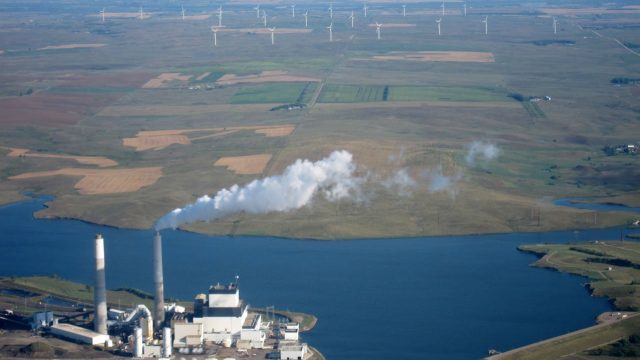Guest Post: The Economics of Coal Beat Wind Every Time

This guest post was submitted by Perrie Schafer, the CEO of Mandan-based Environmental Services, LTD. and a board member of the Lignite Energy Council.
A few weeks ago, I was a panelist in an Energy Town Hall hosted by Scott Hennen at the Bismarck Event Center along with many elected officials and energy-industry leaders.
Wind versus coal raised its head under the All-of-the-Above banner. With North Dakota’s existing transmission, we cannot have all the above. Adding 1000 megawatts (MW) of wind would mean losing 1000 MW of coal generation. Simply put, we must choose wisely, until such time as our state and wind producers are willing to add infrastructure.
Lignite is a pillar in our state because it generates affordable, reliable power and far more tax revenue and jobs than wind. For example, a 1000-MW coal facility provides six times more tax revenue than a 1000-MW wind farm. By giving up coal for wind, we are blowing a $27 million hole in the budgets of state and local governments every single year. Over the life of a plant, this is hundreds of millions in lost tax revenue.
During the Town Hall, there was a natural focus on the announced closure of the Coal Creek power plant – which is the largest coal plant in the state – and the interest of wind developers who wanted to invest around $2.4 billion to build wind turbines in coal country to replace the plant and mine.
These plans hit a snag when Mercer and McLean counties passed wind moratoriums to prohibit those projects from being considered for construction permits for various reasons. Local elected officials have a say in the future of their counties, and they had prudent economic, property, and environmental concerns.
Wind lobbyists, who are largely funded by out of state interests, do not like the moratorium, and they have been in the media complaining that county officials have chased investment out of North Dakota.
Every North Dakotan values capital investment in our state to help build our economy and create jobs, but it is also important for us to consider the “other side of the ledger.” I have a background in finance and manage/own a wealth management company where I run calculations to determine the best decisions possible to guide our investment group.
A wind farm’s value to the state’s economy is largely in up front capital investment to purchase turbine materials and hire a large amount of temporary construction workers, many of whom are from out of state. Once a 1000-MW wind farm, which equals around 800 turbines, is built and operational, landowners receive payments for having turbines on their property, and a few full-time workers gain employment. A wind farm of this size generates about $5 million per year in tax revenue including property taxes and sales taxes (income taxes).
Our coal power plants are already built, and the capital investment has been made so it is not a true apples-to-apples comparison to only consider construction and materials into this analysis. However, we can compare employees, which means the families who fill our schools and towns. One 1000-MW coal power plant and associated mine has around 700 full time workers (who average some of the highest wages in the state) and state and local governments receive $32 million per year in tax revenue from all sources. Like wind, mineral owners receive royalty payments for allowing coal to be mined on their land. The 1000-MW power plant covers a very small footprint of land mass to produce electrons, and it takes a massive amount of land that comes out of production for the state and farmer to produce 1000-MW of wind. (Approx. 14,000 acres to produce 125 MW of wind, so just do the math!)
Setting aside all the other quantifiable factors between wind and coal, wind does not come close to providing the full-time jobs and tax revenue that coal does. Once we look at the costs and benefits of both, coal beats wind.




